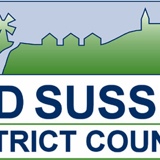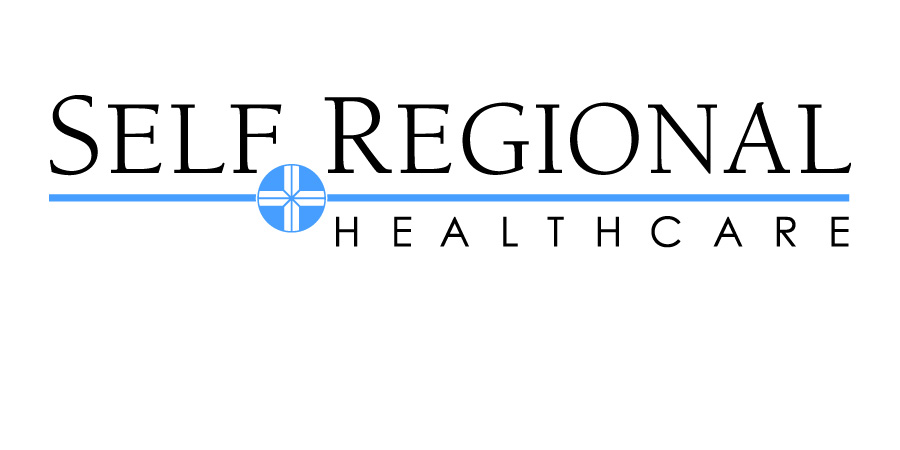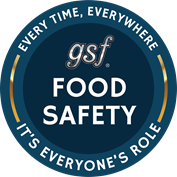Information
-
Document No.
-
Audit Title
-
Client / Site
-
Conducted on
-
Prepared by
-
Location
-
Personnel
-
Program Leader Interview Worksheet
-
Program/Program Leader
1.11 Caseload Clinical Staff: The clinician/recipient ratio should be 10:1
-
Who are the clinical staff and what are their roles, full or part time states, and educational background? What is the total active caseload of the program?
1.13 Program Meeting: Program should meet frequently to plan and review services for each recipient
-
How often does the team meet to discuss clients? Please descrie how you conduct morning meetings? Do you discuss each client in each meeting?
1.14 Practicing Team Leader: Supervisor of front line clinicians should provide direct services.
-
Do you provide direct services? How much of your time is spent providing direct services in a given week?
1.19 Substance Abuse Specialist: Program should include at least one staff member with 1 year of training or clinical experience in substance abuse treatment.
-
How many hours a week does the substance abuse specialist work on the team?
3.17 Individualized Substance Abuse Tx: One or more members of the team should provide direct treatment and substance abuse treatment for recipients with substance use disorders.
-
How many recipients have an identified substance abuse disorder? How much formal, individual treatment for substance abuse has been provided to recipients in the last month?
3.18 Dual Disorders Treatment Groups: Program should use a "stage-wise" treatment model that is non-confrontational, follows behavioral principles, considers interactions of mental illness and substance abuse and has gradual expectations of abstinence
-
Describe the substance abuse treatment model employed by the program? Do you refer recipients to AA? What about detox? Do you confront recipients about their alcohol and drug use? Do you seek to reduce the harmfulness of recipient's substance use or do you expect recipients to be abstinent? How do you view the process of recovery?
1.20 Employment Specialist: Program should have at least one staff member with at least 1 year of training or clinical experience in vocational rehabilitation and support.
-
How many hours a week does the employment specialist work on the team? What kind of services does the employment specialist provide?
1.21 Family Specialist: Program should have at least one staff member with at least 1 year of training or clinical experience in family counseling and support.
-
How many hours a week does the family specialist work on the team? What kind of services does the family specialist provide?
1.22 Program Assistant: Program should have at least 1 full time program assistant.
-
How many hours a week does the program assistant work on the team? Does the assistant only work for this ACT team?
2.11 Explicit admission criteria: Program should have a clearly identified mission to serve a particular population and has and uses measurable and operationally defined criteria to screen our inappropriate referrals.
-
Do you have formal admission criteria? What are they? Have you ever rejected a SPOA referral? Why? If never rejected SPOA referral, Have all your referrals from SPOA been appropriate for ACT? Do you think you have any recipients who might not be appropriate for ACT on your current caseload?
2.13 Full responsibility for treatment services: In addition to case management and psychiatric services, program should directly provide counseling/psychotherapy, housing support, substance abuse treatment, employment and rehabilitative services.
-
Do you use external providers for any services? If so, what services are provided externally? Of these services, which do you provide: substance abuse treatment, counseling/psychotherapy, housing support, rehabilitative services(ie help with ADL's, social skills, leisure time training)
2.14 Responsibility for crisis services: Team should provide 24 hour coverage for psychiatric crises.
-
Describe the 24 hour crisis coverage that you provide
2.15 Responsibility for hospital admissions: Team should be involved in hospital admissions.
-
In general, what role does program play in hospital admissions? *Using hospital log, go dow list of last 10 hospitalizations and ask the following questions for each one* What happened on this admission? Was the team aware of the admission in advance?
2.16 Responsibility for hospital discharges: Team should be involved in planning for hospital discharges.
-
In general, what role does program play in hospital discharges? *Going down the list of hospital discharges that program has prepared in advance, ask the following questions about each one* What happened at discharge? Was th team aware of the discharge in advance?
3.11 Community Based Services: Team should work to monitor status, assess employment skills, and develop living skills in the community rather than in the office.
-
Where do service contacts typically occur? wHat percent, would you say, are in the community as opposed to the office?
3.13 Assertive engagement mechanisms: As part of assuring engagement, team should use street outreach, as well as legal mechanisms (ie rep payees, probation/parole, op commitment) as indicated.
-
How do you reach out to a recipient who is difficult to engage? Do you use legal mechanisms, including contact with probation or parole officers, rep payees, or AOT? Do you use street outreach?
3.20 Role of Recipients on team: Recipients should be involved as members of the team providing direct services.
-
Are recipients employed on the treatment team? If yes, what is their role?
4.11 Family Education Sessions: Program should provide education to interested families/support networks.
-
Do you provide education based on an established curriculum to families or support networks?
4.12 Self Help Resources: Program has a system in place to ensure that recipients are made aware of and receive referrals for self help resources in the community.
-
Does clinical staff, on a routine basis, discuss self help groups with recipients and make referrals where desired? How often do you make referrals to self help groups? Are those referrals part of a routine process or the result of expressed interest by a recipient? Do you have relationships with any self help or community based groups? Do you have a list or handout of self help resources in the community?
5.11 Commitment to Cultural Competence: Program should have a management level person responsible for cultural competence, a dedicated budget for cultural competence activities, and a comprehensive cultural competence plan.
-
Do you have a plan for ensuring that the services provided are relevant to different cultural groups? How is that implemented? Do you have a person who is responsible for coordinating cultural competence? If so, what is their level in the organization? What kind of cultural competence activities do you sponsor? Do you have a budget for cultural competence?
5.12 Culturally Relevant Service Delivery: Program/agency makes proactive efforts to ensure culturally relevant service delivery.
-
Do staff members have necessary language skills to communicate with population served? Are interpreters available when needed? Do staff members have relevant experience working with the population served? What kind of training do you provide in culturally and linguistically competent care? Who receives that training? What priority do you think the agency places on having a diverse workforce at all levels of the organization?
5.13 Consent for release of information: Program should have policy on obtaining written consent from the recipient for the release of any information.
-
Describe your policy on obtaining consent for the release of information? How are consent usually obtained and used by staff?
5.14 Recipient Input: Program should have policy on formal mechanism for incorporating ongoing recipient input into program planning, service development, and program review activities.
-
How do you obtain input on program operations from the recipients you serve? Is that a formal mechanism or something you do every now and then? Do you have a recipient on your governing body or advisory board? Are there any other methods you use to obtain input from recipients? How does information from recipients get factored into program operations? Can you give me an example of a recent change that was made in response to recipient input?
5.15 Recipients' Rights: Program should have policy and procedure for ensureing recipient's rights.
-
Describe the process for addressing recipient grievances, Do you ever make program changes in response to recipient grievances? Do you track grievances in a systematic way? Do you ever solicit feddback from recipients on how well the prgoram protects their rights? Do you provide a handout on rights? What happens when a recipient refuses treatment?
5.16 Recipient Access to Records: Program should provide recipients full access to their charts.
-
Do you enourage recipients to access their charts? Can they make notes in their own chart? What is the procedure for recipients to access their charts? Have you ever turned down a request for a chart? If yes, why?
6.16 Discharge Summaries: Program should have policy on discharge and should transmit appropriate discharge summaries to receiving programs.
-
Does program have criteria for when recipients can be discharged? Is there a minimum period of time before a recipient who has not engaged in services can be dishcarged from the team? Does program have policy on recipients who are lost to follow up?
7.11 Quality Improvement: Program should have systematic approach for ensuring ongoing quality assurance regarding treatment practices.
-
Do you provide structured supervision for practicioners? What programmatic procedures do you use to ensure quality of care? How do you identify deficiencies in the way that you provide care? Do you use corrective action plans when deficencies are identified? (If yes, ask to see them) Do you have a system for collecting data on recipient outcomes?
7.12 Staff Development and Core Competencies: Program staff should receive appropriate and ongoing professional training.
-
How many of your staff have received the core ACT training provided by NYSOMH? Have staff received any other trainings, if so, How many? How about cultural competence training?
7.13 Utilization Review: Programs should have systematic approach for UR of appropriate service provision conducted by independent reviewer.
-
Describe your procedure for UR, Who performs UR? What is the professional backgroup of the person performing UR? What is their relationship to the program? Does the governing body have the oversight for UR?
7.14 Incident Review Committee: Program has appropriate incident review committee that investigates and reports on incidients, makes and follows up on recommendations.
-
Do you have a committee that reviews incidents? Describe the professional compostion of the committee. Have you ever made changes based on the findings of the committee? How is reporting to external authorites performed, when required.
7.15 Governing Body: Program shall have a governing body that is responsible for all aspects of program oversight.
-
Do you have a governing body? Can you describe its monitoring function in the organization? Does it respond to recipient or family concerns? If yes, can you give us an example of its responding to a concern voiced by recipients or families.
7.16 Team Scheduling: Pogram should have system for logging reciptient contacts, maintaining daily and weekly scheduling information, and tracking whereabouts of staff members at all times.
-
What scheduling documentation do you use? Do you log daily contacts for each recipients? How do you keep weekly and monthly scheduling information?
8.11 Safety: Persons (recipients, staff and visitors) shall be safe from undue harm while they are at the program site; program should have protocol for staff safety during community visits.
-
What are the evacuation procedures? Do you have a protocol for staff safety when they are in the field or in high risk situations? If yes, ask to see protocol. Do you keep track of staff who are in the field and when they should return? If yes, how do you do that.














